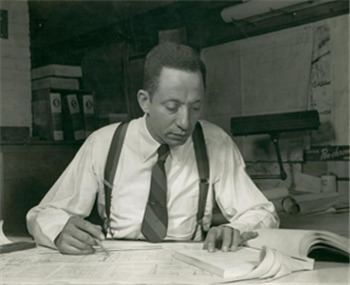Died 29 June 1986 | ||
 | ||
Structures | ||
Hilyard Robinson (1899–1986) was a prominent African American architect.
Hilyard Robinson was born in Washington, D.C. where his mother was a seamstress and his grandfather had a shoe shining business. Robins graduated from M Street High School and then studied at the Pennsylvania Museum and School of Industrial Arts. During in World War I Robinson served as an U.S. Army artillery officer where he spent time in Paris at the Armistice and observed the style of the buildings there. Upon his return to the United States, Robinson transferred to the University of Pennsylvania before eventually graduating from Columbia University in 1924 with a degree in architecture and working for several architectural firms and teaching at Howard University. In 1931 after marrying Helena Rooks and completing a masters at Columbia, the Robinsons went to Europe studying in Germany where Robinson was influenced by the Bauhaus style as well as Scandinavia, France and elsewhere. Robinson taught architecture at Howard University from the 1920s to 1960s, and he also designed many campus buildings. The U.S. Department of the Interior commissioned Robinson to build the Langston Terrace Dwellings for which he gained prominence, and Robinson also served as an architectural consultant to the government of Liberia. Robinson died in 1986 at Howard University Medical Center. Robinson worked closely with other American architects such as Ralph A. Vaughn and Paul Williams (architect).
